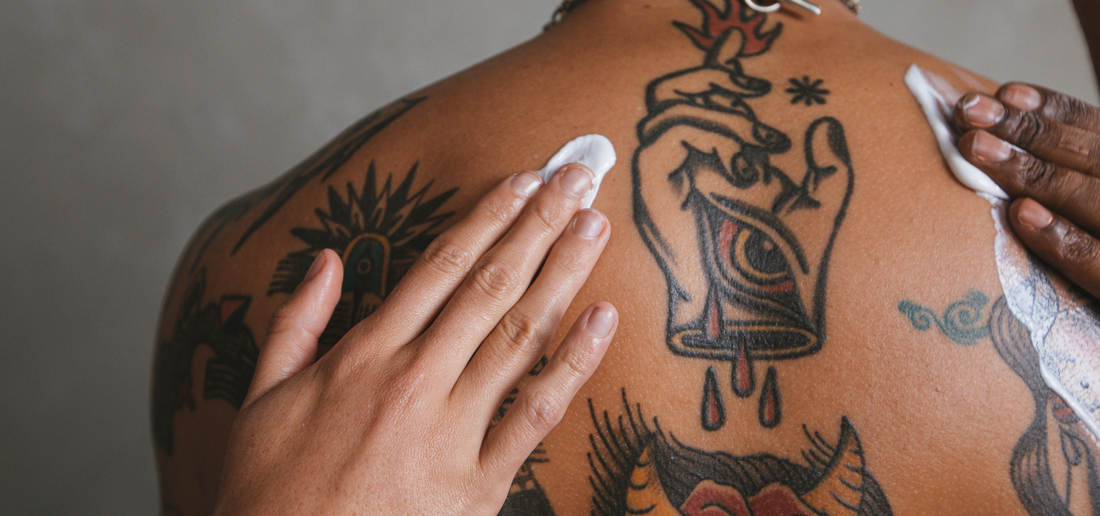
Can You Swim With A New Tattoo?
Share
You’ve fallen in love with a concept, taken the hard steps in researching and finding the perfect artist (not to mention the time spent in the chair) and now you’re finally ready to get out and show your brand-new ink off to the world. Deceptively enough, heading down to the beach or your mate’s poolside barbecue might seem like the perfect opportunity to do so. Unfortunately, if you’re planning on jumping in the water, you’re just going to have to hold off for a while, at least until you’re fully aware of the risks of swimming with a new tattoo. You also need to be aware of how to waterproof a tattoo for swimming in case you do need to take a dip.
How long do you wait to swim after getting a new tattoo?
There is no exact answer to this question, it simply comes down to waiting for it to heal. As we know, all tattoos (and people) are different, some heal fast, others take more time; size and location also play a major role here. In short, the healing process for tattoos varies from person to person. The best thing to do is assess the situation, just make sure your skin has surpassed the stages of itching, scabbing and peeling before swimming with a new tattoo. If you’re still unsure, swing past your local tattoo studio and ask your artist for their professional opinion.

What happens if you swim with a new tattoo?
As is recommended with most open wounds, you want to avoid submerging your new ink in water for prolonged periods of time wherever possible. Here are some of the risks involved when you swim with a new tattoo.
Infection
Swimming with a new tattoo could potentially expose your wounded skin to harmful bacteria in the water, causing infections that can range from mild to severe. Although rare, issues such as sepsis can also arise, resulting in swelling, fevers, chills, and hospitalization.
Skin Irritation
Immediately swimming after getting a tattoo can lead to an elongated healing process, extending the itching/peeling/scabbing period for much longer than expected. Contact with chemicals like chlorine is also known to cause a skin irritant known as contact dermatitis, a gnarly red rash accompanied by blistering, sores, swelling, crusting and itchiness.
Blurred/ Less Vibrant Ink
Though less severe, swimming after getting a tattoo without waiting for it to properly heal can also result in a lack of vibrancy and detail in your new ink. Both chlorine and salt water are particularly tough on fresh body-art.
Both can leach ink from your tattoo, resulting in blurry, patchy and faded work.
How to waterproof a tattoo for swimming?
Unfortunately, there is no way to completely waterproof a tattoo for swimming. If you’re really in a crunch and you absolutely must swim after getting a tattoo, there are some steps that you can take that may suppress the damage.
1. If you’re going to swim with a new tattoo, make sure it is completely covered with either a waterproof tattoo wrap for swimming. We have our Ink Nurse Tattoo Healing Wrap Pro for this occasion. Only apply it right before you swim, and remove it as soon as it’s done, as keeping it covered can lengthen the healing process.
2. Once out of the water, promptly remove covering and gently rinse your ink with fresh water
3. After thoroughly rinsing your tattoo, apply Ink Nurse’s Multi-Purpose Remedy Cream to get your healing process back on track. This helps clean up the tattoo and relieve any itches or discomfort you might get from exposure to pool water.
For more information on how you can take care of your tattoo not just for swimming, but also in general, visit our website at Ink Nurse and learn more about our aftercare products!
